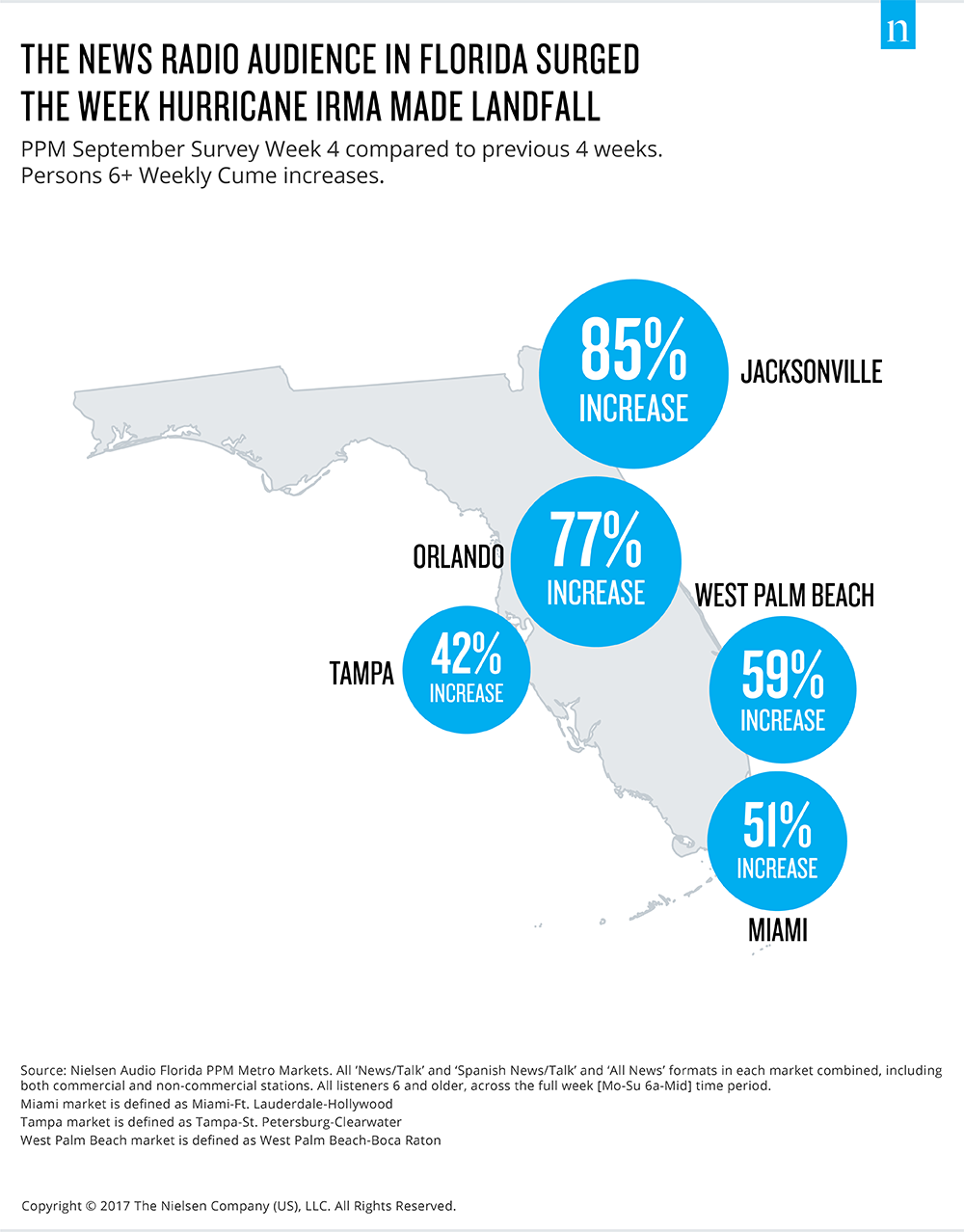This year’s hurricane season has been newsworthy for many reasons, as multiple storms from the Atlantic basin have made headlines both in the U.S. and abroad. And the impact of several of these events from a radio perspective is quite evident when examining listening trends in Texas, Florida and around the continental U.S. Nielsen’s portable people meter (PPM) September survey—which stretched from Aug. 17 until Sept. 13—tracked listener preference in the top 48 radio markets in America. It reveals a distinct spike in listening to News/Talk stations during this period, as weather dominated the busy news cycle.
It’s not unusual to see spikes in News/Talk listening in the fall. In addition to being ripe for worsening weather, News/Talk radio audiences always grow in the lead up to U.S. presidential elections, as we’ve seen in recent cycles. In fact, the share of audience for News/Talk stations (both commercial and non-commercial) during the recent survey was the format’s highest since 2012 during the lead-up to that U.S. presidential election.
Hurricane Sandy was also a huge news story on the radio in 2012, but the listening spike happened during the November PPM survey—the same month as the election. And given the double-whammy of those two events, November 2012 remains the high water mark for News/Talk’s share of audience in PPM measurement, but as we have detailed throughout this year, the format has seen a significant boost in audience from the intense interest in our current administration.
This month, Hurricanes Harvey and Irma arrived during the September survey: Harvey made landfall in Texas on Aug. 25 and 26 during the second week of the survey, directly or indirectly affecting four of Nielsen’s PPM markets in the state (Houston, Austin, San Antonio and Dallas). Irma followed just two weeks later with landfall in Florida on Sept. 10 before moving on to affect five different markets in the sunshine state (Miami, West Palm Beach, Tampa, Orlando and Jacksonville).
While each storm was unique, we saw a common thread across all of the affected markets—audience tune-in to local news radio stations surged during the week each hurricane arrived. Regardless of evacuations, flooding, power outages or disruption from the storms, the reach of local news radio stations spiked the week that each storm made landfall. The following graphics combine all of the news-formatted radio stations (All News, News/Talk and Spanish News/Talk, both commercial and non-commercial) in each market and compare the specific hurricane week to the four weeks prior.


Data used in this article is inclusive of multicultural audiences. Hispanic consumer audiences are composed of both English and Spanish-speaking representative populations.



